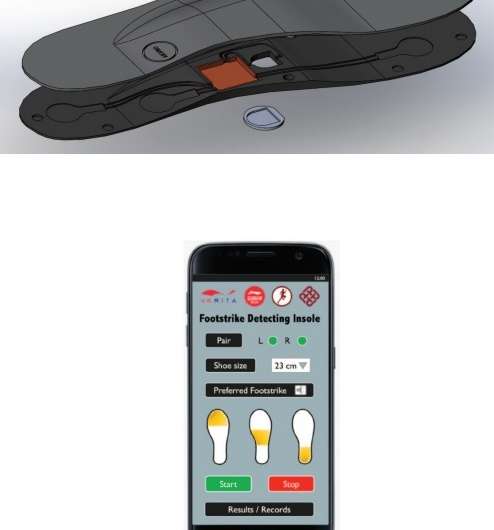3-D design of the sensing insole (above) and the interface of the smartphone app. Credit: PolyU
Researchers at The Hong Kong Polytechnic University (PolyU) have developed a mobile biofeedback device for footstrike pattern modification for injury prevention and rehabilitation in runners.
The annual injury risk for regular runners is up to 80%. It is largely related to how runner's foot hits the ground. Emerging evidence suggests that heel or forefoot strike may result in injuries such as stress fractures or Achilles tendinitis.
According to biomechanical analysis, midfoot strike is an optimal pattern, but it is difficult for runners to attain on their own. This invention provides real-time information about footstrike patterns over the whole running bout and real-time feedback through a specially designed smartphone app. Runners may make use of the information to modify their gait mechanics for injury prevention and rehabilitation.
Special features and advantages
- High accuracy - cross-validated with laboratory-based equipment
- Low cost when compared to motion capturing device (< 1/10000) or pressure sensors (< less than 1/1000)
- Continuous outdoor monitoring
- Real-time information and feedback for users to adjust their footstrike pattern accordingly
Applications
- Injury prevention – Runners can use the device to have biofeedback training which modifies gait mechanics by adjusting footstrike pattern.
- Rehabilitation – Recovering runners are able to realize their footstrike pattern and avoid overloading of particular body structures e.g. runners with repaired Achilles tendon should avoid forefoot strike.
Provided by Hong Kong Polytechnic University




















